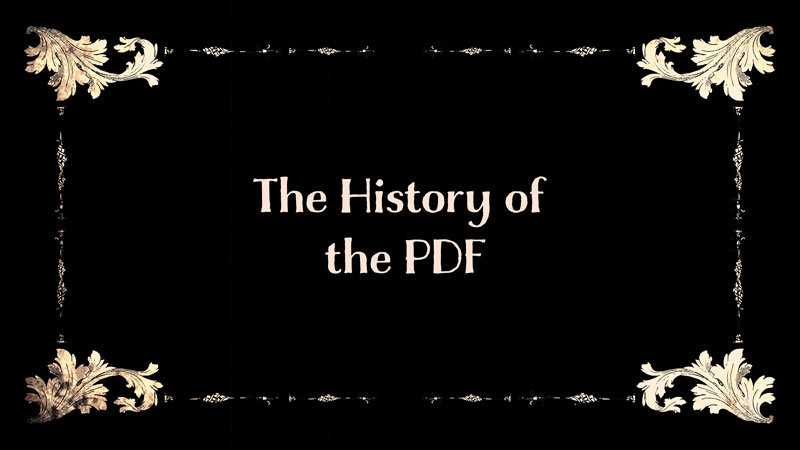5 Good Reasons to Use PDFs for Printing (with added history!)
Posted in Perfect print design on 18 July 2023
PDFs have become the standard file format for printing, they are easy to share, easy to view and have all the information needed to print from. Let’s look at 5 reasons to use PDFs for printing:
- PDFs keep their formatting:
Just because a file looks perfect on your computer, it doesn’t mean it will on ours. PDFs are great, because they preserve the layout, fonts, images, and other design elements exactly as intended, regardless of the software used for printing. This means that your printed materials will mirror the original digital version perfectly. By using PDFs, you can eliminate the risk of elements shifting or getting distorted during the printing process. A huge bonus! - PDFs are portable!
PDFs are compatible with a wide range of printing software, making them an ideal choice for seamless integration with our printing workflows. We prefer PDFs because they can be easily imported without the need for additional conversions or adjustments. This compatibility dramatically reduces the chances of errors in your printing. - PDFs Maintain Colour Accuracy and Consistency
Colour accuracy and consistency is so important when it comes to elements that need perfect colour representation, such as logos, brand elements, or photographs. PDFs provide good support for colour profiles, including CMYK (Cyan, Magenta, Yellow, and Black) and spot colours, meaning that the colours you choose on your computer match perfectly to the printed output. By using PDFs, you can have more confidence in the fidelity of the colours you have chosen. - PDFs are the perfect file size, and there’s no need to provide other elements
Other file formats may need to be packaged up and sent with added images, infographics and fonts. PDFs embed all the elements so that only the PDF itself has to be provided. ‘Native’ files that were created in a specific program will have layers and settings which can inflate the file size with information that is not needed for printing the file. PDFs are much smaller because they will compress the data without losing any quality – great for uploading to us! - Accessibility and Archiving
PDFs are not only excellent for immediate printing needs but also for long-term accessibility and archiving of your documents. PDFs are highly compatible across various devices and platforms, meaning that your files will be accessible and viewable in the future, even as technology evolves. They even support features like searchable text, metadata, and document security, making them a reliable format for archiving important records or creating digital libraries. By using PDFs, you can future-proof your printed materials and ensure their longevity.

- Birth of PDFs:
In the summer of 1990, Adobe Systems co-founder Dr. John Warnock wrote a six-page white paper called “The Camelot Project.” He wanted to address the problem of being unable to reliably exchange high fidelity documents between different computer applications and systems. He aimed to create a universal document format that could faithfully reproduce documents across different platforms and devices. - Rising Popularity:
PDFs quickly gained recognition for their reliability and versatility. In 1995, Adobe released Acrobat, enabling users to create, edit, and view PDF files. This spurred the widespread adoption of PDFs across industries, as businesses and individuals recognised their benefits in preserving document layout and graphics. - Standardisation:
To ensure compatibility and further promote PDFs, the International Organization for Standardization (ISO) standardised the format in 2008 under the ISO 32000 standard. This solidified PDFs as a trusted file format for document sharing and archiving. - Evolving Features:
As technology advanced, PDFs evolved to meet changing needs. Interactive features, including hyperlinks, multimedia elements, and forms, were added to enhance document functionality. PDFs became more than static files, enabling the creation of interactive documents, e-books, and presentations. - Accessibility and Security:
PDFs also addressed accessibility and security concerns. Tagged PDFs, alt text, and structured elements were introduced to improve accessibility for individuals with disabilities. Meanwhile, robust security features like password encryption, digital signatures, and document permissions ensured data confidentiality and integrity.
PDFs have transformed the way we share, store, and preserve documents. From their humble beginnings as a vision for universal document formatting, PDFs have become a standard across industries. With their platform independence, document fidelity, interactive capabilities, accessibility features, and security options, PDFs continue to play a vital role in our digital landscape. So when you make an order with us, be sure to export your file to a PDF before you upload it for the best possible results!